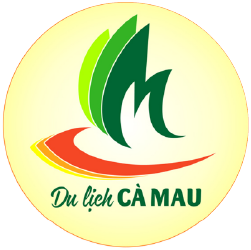Despite its challenges Russia has great potential for growing shrimp sales, says Colombia’s leading shrimp exporter.
Having just landed its first deal to export to Russia, Cartagena Shrimp Company has “big hopes” for the Russian market, its commercial director Juan Sole said.
The Colombian producer, which focuses on head-on, shell-on shrimp and is known for its ‘Cartaqua’ brand, obtained a license to sell to Russia in 2009. It started supplying the distributor Agama Group in 2011 and is exploring more opportunities in the country.
Although Russia is a challenging market — setting up exports to Russia is arduous and complicated — it is also one with big potential, Sole said.
“Russia has a tradition for coldwater. But the growing middle class in Russia means that more and more people are finding that they can now afford warmwater shrimp,” Sole told IntraFish.
The feeling of interest appears to be mutual. Speaking to IntraFish last month, Agama said that it was planning its first tour of Latin American shrimp producers to hunt for potential suppliers. Today, Cartagena Shrimp is its only non-Asian shrimp supplier.
“Agama previously bought from China, but they really liked our product,” Sole, who argues that there is a definite texture and flavor difference between some Asian and Latin American shrimp, due to a difference in the water’s salinity, said. There was a catch however; “We had to level to China’s prices to be able to compete.”
Still, shrimp in Russia remains a much more high-end product than in markets like Spain.
“Shrimp is still perceived as a luxury goods in Russia, you’re talking maybe of €15 ($19.6) a kilo in retail. In comparison in Spain it’s really the ‘chicken of the sea’ — it sells for maybe €7 ($9.14) to €9 ($11.8) per kilo, it’s cheaper than peanuts!”
The higher prices may partly also be due to Russia’s expensive logistics, Sole said.
Founded in 1983 by Salomon Finvarb, Cartagena Shrimp is a family-owned producer led today by the founder’s son, Moris Finvarb. Sole is the only employee to be outside Colombia — from his base in Barcelona, his role is to oversee Cartagena’s exports, mainly to Spain, the United Kingdom, France and Russia but perhaps as well, soon, to China.
China’s growing consumption makes it an attractive and increasingly unavoidable market for shrimp suppliers.
Ecuadorian suppliers have already started exporting there “with great success” and a walk through the aisles of Carrefour in China was enough to see that there is a demand for cooked, head-on, shell-on shrimp, which Cartagena is keen to supply, Sole said.
However, the challenge there for Cartagena Shrimp is to find suppliers willing to buy such ready-processed shrimp.
“I was at the Qingdao Seafood Show in China and met with several companies that were interested,” Sole said. “But the difficulty is to convince them to buy shrimp if they don’t need to re-process it, because I’m more interested in supplying them a fully developed product. The least VAP I do, the more I’m a commodity and can’t differentiate.”
“It will be tough,” he said.
Another challenge was China’s demand for larger sizes. Huge floods in Colombia last November means that the company has been mainly supplying smaller sizes — 80/100 — since then. Larger sizes, of 60/70 and 50/60, should appear around April-May, Sole said.
The growth in Russia and China are in contrast to the European markets. These are “tough moments” for sales in France, Spain and the UK, Sole said, adding that Spain just saw one of its worst Christmases in terms of sale. However, “there is no need to be entirely pessimistic, you just have to be cautious about where we are and where the market develops.”
Based in Cartegena de Indias, in northern Colombia, Cartagena Shrimp operates its own hatchery, factory and 800 hectares of farms, with a density ranging from 30 to 40 shrimp per square meter to 60-70.
It claims to be Colombia’s largest shrimp producer, with a raw material output of around 6,500 metric tons a year against maybe 5,000 metric tons for Colombia’s other main producer, Oceanos.
Today Spain is its main market, taking around 1,500 metric tons a year of head-on, shell-on cooked. Cartagena sells around 500 metric tons of peeled and raw shrimp to France, and 300 metric tons of peeled and cooked shrimp to the UK. Its partners include Bluecrest — now part of Young’s Seafood — in the UK Miti in France and Mar del Altura in Spain.
Volume growth is not a focus, Sole said. “6,500 metric tons is a good size. We are more focused on finding niche markets for cooked head-on, shell-on shrimp.”
This focus partly emerged from Colombia’s strict labor laws, which showed that it was more advantageous for Cartagena to focus on that market, he said. “We were also the first in Colombia to cook at origin, around 15 years ago.”
